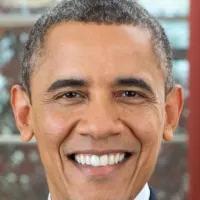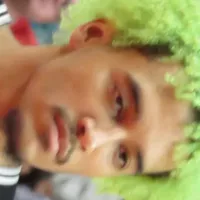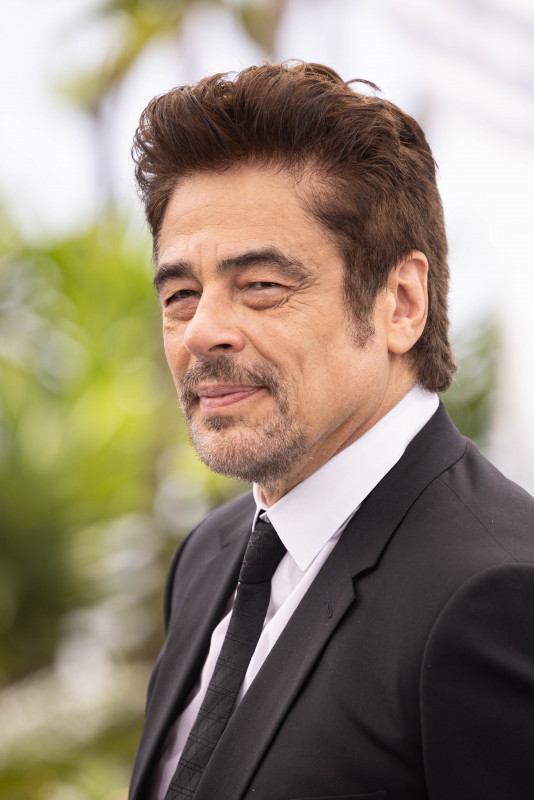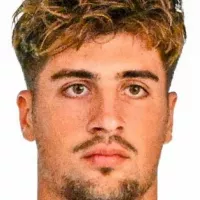Vietnam, officially the Socialist Republic of Vietnam, is located in Southeast Asia. It's the world's 15th most populous country with over 100 million people, sharing borders with China, Laos, and Cambodia, and maritime borders with several other nations. A communist state, its capital is Hanoi and its largest city is Ho Chi Minh City.
1908: Hanoi Poison Plot
In 1908, increasing dissatisfaction with French rule led to half-hearted and badly executed plots to oust the French, like the infamous Hanoi Poison Plot.
1917: Thái Nguyên uprising
In 1917, another large-scale rebellion, the Thái Nguyên uprising, was suppressed heavily.
1930: Yên Bái mutiny by the VNQDĐ
In 1930, the Yên Bái mutiny by the Vietnamese Nationalist Party (VNQDĐ) occurred, which the French quashed.
1932: Emergence of Thơ Mới
In 1932, Vietnamese literature was influenced by Western styles with the first literary transformation movement of thơ mới emerging.
1940: Japanese invasion of French Indochina
In 1940, during World War II, the war in the Pacific led to the Japanese invasion of French Indochina.
1941: Việt Minh emerges
In 1941, the Việt Minh, a communist-led national liberation movement, emerged under Ho Chi Minh's leadership.
1944: Vietnamese famine
From 1944–1945, the Vietnamese famine killed up to two million people.
March 1945: Full-scale takeover by Japan
In March 1945, Japan executed a full-scale takeover of Vietnam.
August 1945: Allies decide to divide Indochina
In August 1945, the Allies had decided to divide Indochina at the 16th parallel to allow Chiang Kai-shek of the Republic of China to receive the Japanese surrender in the north while Britain's Lord Louis Mountbatten received their surrender in the south.
1945: War in Vietnam begins
In 1945, as the French were weakened by the German occupation, British-Indian forces and the remaining Japanese Southern Expeditionary Army Group were used to maintain order and help France reestablish control through the 1945–1946 War in Vietnam, south of the 16th parallel.
1945: Vietnam declares independence from Japan
In 1945, the Viet Minh, led by Ho Chi Minh, launched the August Revolution and declared Vietnam's independence from the Empire of Japan.
1945: Việt Nam adopted by imperial government in Huế
In 1945, the country was usually called Annam until the imperial government in Huế adopted the name Việt Nam.
December 1946: First Indochina War erupts
In December 1946, tensions between the Viet Minh and French authorities erupted into the full-scale First Indochina War.
1952: Summer Olympic Games Participation
Vietnam has participated in the Summer Olympic Games since 1952.
1953: Agrarian reforms in North Vietnam begin
From 1953 to 1956, the North Vietnamese government instituted agrarian reforms including "rent reduction" and "land reform", which resulted in significant political repression.
July 1954: French Indochina dissolved under the Geneva Accords
In July 1954, French Indochina was dissolved under the Geneva Accords into three countries—Vietnam, and the kingdoms of Cambodia and Laos, and Vietnam was further divided into North and South administrative regions.
1954: Partition of the Country and Olympic Participation
After the partition of Vietnam in 1954, only South Vietnam competed in the Olympic Games.
1954: Partition of Vietnam
Following the partition of Vietnam in 1954, North Vietnam maintained relations with the Eastern Bloc, while South Vietnam maintained relations with the Western Bloc.
1954: The defeat of French Union forces in the Battle of Điện Biên Phủ
In 1954 The defeat of French Union forces in the Battle of Điện Biên Phủ allowed Hồ to negotiate a ceasefire from a favourable position at the subsequent Geneva Conference.
July 1955: South Vietnam refuses to participate in elections
In July 1955, the State of Vietnam's prime minister Ngô Đình Diệm announced that South Vietnam would not participate in the elections stipulated by the Geneva Accords.
October 1955: Ngô Đình Diệm becomes president
In October 1955, Ngô Đình Diệm toppled Bảo Đại in a fraudulent referendum and proclaimed himself president of the Republic of Vietnam.
July 1956: Elections pending for Vietnam
In July 1956, elections were scheduled to be held in Vietnam.
1956: Political repression and assassinations
In 1956, Diệm countered North Vietnamese subversion (including the assassination of over 450 South Vietnamese officials in 1956) by detaining tens of thousands of suspected communists in "political reeducation centres".
1956: South Vietnam at the Olympics
South Vietnam sent athletes to the 1956 Olympics.
November 1957: North Vietnamese government claims deaths
In November 1957, the North Vietnamese government claimed that 2,148 people were killed in the process.
1960: Soviet Union and North Vietnam sign treaties
From 1960, the Soviet Union and North Vietnam signed treaties providing for further Soviet military support.
1963: Buddhist demonstrations and government crackdown
In 1963, Buddhist discontent with Diệm's perceived pro-Catholic bias erupted into mass demonstrations, leading to a violent government crackdown.
1964: US increases military contribution
In 1964, the United States used the Gulf of Tonkin incident as a pretext for increasing its contribution of military advisers to South Vietnam.
1965: Vietnamese Civilian Casualties
Between 1965 and 1974, nearly 1.4 million Vietnamese civilians were estimated to be killed or wounded.
1965: US forces involved in ground combat operations
By 1965, US forces became involved in ground combat operations in South Vietnam to support the struggle against the communist insurgency.
1967: Nguyễn Văn Thiệu cemented grip on power
In 1967, Thiệu gradually outmaneuvered Kỳ and cemented his grip on power in fraudulent elections
1968: Tết Offensive
In 1968, the communists attacked South Vietnamese targets during the Tết Offensive, which failed militarily but turned US public opinion against the war.
1971: Nguyễn Văn Thiệu cemented grip on power in fraudulent elections
In 1971, Thiệu gradually outmaneuvered Kỳ and cemented his grip on power in fraudulent elections
1972: South Vietnam at the Olympics
South Vietnam sent athletes to the 1972 Olympics.
January 1973: Paris Peace Accords
On January 27, 1973, the Paris Peace Accords were signed.
March 1973: Withdrawal of American combat troops
By March 29, 1973, all American combat troops were withdrawn from Vietnam.
December 1974: North Vietnam captures Phước Long province
In December 1974, North Vietnam captured the province of Phước Long.
1974: US Senate Subcommittee Estimate of Vietnamese Casualties
In 1974, a US Senate subcommittee estimated that nearly 1.4 million Vietnamese civilians were killed or wounded between 1965 and 1974, including 415,000 deaths.
April 1975: Fall of Saigon
On April 30, 1975, Saigon fell, marking a major turning point in the Vietnam War.
1975: Establishment of Nationwide Health Service
After the national reunification in 1975, a nationwide health service was established in Vietnam.
1975: North Vietnamese victory and reunification
In 1975, North Vietnam achieved victory, leading to the reunification of Vietnam as a unitary communist state.
1975: Establishment of Vietnam Academy of Science and Technology
In 1975, the Vietnam Academy of Science and Technology (VAST) was established by the government.
July 1976: North and South Vietnam Merged
On July 2, 1976, North and South Vietnam were officially merged to form the Socialist Republic of Vietnam.
1976: Post-Reunification Policies
Following the reunification in 1976, increased communist policies nationwide led to the nationalisation and confiscation of property, especially from the Hoa in the south and the wealthy in cities.
1976: Vietnam becomes a socialist state
In 1976, Vietnam reunified as a unitary communist state that self-designated as a socialist state under the Communist Party of Vietnam (CPV).
1976: Reunification and Olympic Committee Formation
Since the reunification of Vietnam in 1976, it has competed as the Socialist Republic of Vietnam. The present Vietnam Olympic Committee was formed in 1976.
1978: Vietnamese Invasion of Cambodia
In 1978, the Vietnamese military invaded Cambodia in response to Khmer Rouge massacres of Vietnamese residents. They removed the Khmer Rouge from power and occupied Phnom Penh.
1979: Chinese Incursion into Northern Vietnam
In 1979, China launched a brief incursion into northern Vietnam, which caused Vietnam to rely more heavily on Soviet aid.
1979: Vietnam's Population in 1979
The 1979 census showed the total population of reunified Vietnam to be 52.7 million.
1979: IOC Recognition
The Vietnam Olympic Committee was recognised by the International Olympic Committee (IOC) in 1979.
1985: GDP Composition in 1985
In 1985, agriculture made up 37.2% of Vietnam's GDP, while industry constituted 26.2%.
December 1986: Sixth National Congress of the Communist Party of Vietnam
In December 1986, at the Sixth National Congress of the Communist Party of Vietnam, reformist politicians replaced the old guard government with new leadership, led by Nguyễn Văn Linh, who implemented market reforms known as Đổi Mới.
1986: Economic and political reforms launched
In 1986, the Communist Party of Vietnam (CPV) initiated economic and political reforms similar to the Chinese economic reform, transforming the country into a socialist-oriented market economy.
1986: Introduction of Đổi Mới reform programme
In 1986, the Sixth National Congress of the CPV introduced socialist-oriented market economic reforms as part of the Đổi Mới reform programme, encouraging private ownership in industry, commerce, and agriculture.
1986: Vietnam's Political Transition
Since 1986, Vietnam retreated from totalitarianism to authoritarianism.
1986: Rapid Urbanization
Since 1986, Vietnam's urbanization rates have surged rapidly after the Vietnamese government implemented the Đổi Mới economic program, changing the system into a socialist one and liberalizing property rights.
1986: VNPT Monopoly Retained Until 1986
Until 1986, telecommunications services in Vietnam were entirely provided by the state-owned Vietnam Post and Telecommunications General Corporation (VNPT), which maintained its monopoly.
1988: Summer Olympics Attendance
Since 1988, the Socialist Republic of Vietnam has attended every Summer Olympics.
1989: Agriculture's share of GDP
In 1989, agriculture's share of Vietnam's GDP was 42%.
1989: End of the People's Republic of Kampuchea
In 1989, the People's Republic of Kampuchea, which was established after Vietnam's intervention in Cambodia, ended.
1990: Economic growth
Between 1990 and 1997, Vietnam experienced rapid economic growth, averaging approximately 8% annually, due to the Đổi Mới reforms.
1992: Constitution of Vietnam - Freedom of Belief
Under Article 70 of the 1992 Constitution of Vietnam, all citizens enjoy freedom of belief and religion.
1993: Access to Electricity in 1993
In 1993, access to electricity grew to 14% of total households.
1994: United States ends economic embargo
In early 1994, the United States ended its economic embargo against Vietnam, marking a significant step in normalizing relations.
August 1995: Improved Relations with the United States
In August 1995, relations between Vietnam and the United States began improving as both states upgraded their liaison offices to embassy status.
1995: Telecom Sector Reform
In 1995, the Vietnamese government reformed the telecom sector, implementing a competitive policy by establishing two domestic telecommunication companies: the Military Electronic and Telecommunication Company (Viettel) and the Saigon Post and Telecommunication Company (SPT or SaigonPostel).
1995: Growth in Higher Education
Since 1995, enrollment in higher education in Vietnam has grown tenfold to over 2.2 million with 84,000 lecturers and 419 institutions of higher education.
1997: Asian financial crisis slowdown
In 1997, the Asian financial crisis caused Vietnam's economic growth to slow down to 4–5% per year.
1997: Regulation of Public Internet Access
Since 1997, Vietnam has regulated public internet access extensively using both legal and technical means. The resulting lockdown is widely referred to as the "Bamboo Firewall".
1999: Economic recovery
In 1999, Vietnam's economy began to recover from the Asian financial crisis.
2000: Economic growth
From 2000 to 2005, Vietnam's economy experienced growth at around 7% per year.
2000: Hospital Beds per 10,000 People
In 2000, Vietnam had only 24.7 hospital beds per 10,000 people.
2000: Education for Nature – Vietnam Founded
In 2000, the non-governmental organization Education for Nature – Vietnam was founded.
2000: AFC U-16 Championship
In 2000, the under-17 team achieved fourth place among 10 teams of the AFC U-16 Championship.
2000: Number of Colleges and Universities
The number of colleges and universities in Vietnam increased from 178 in 2000.
2001: Moped Increase
In Hanoi, the number of mopeds increased from 0.5 million in 2001.
2002: Access to Fresh Water in 2002
Data from 65 utility companies showed that only 12% of households in the area covered by them had access to the water network in 2002.
2003: Solid Waste Increase
From 2003, the amount of solid waste generated in urban areas of Vietnam increased by more than 200%.
2003: End of VNPT Monopoly
In 2003, the Vietnamese government officially ended VNPT's monopoly in the telecommunications sector with the issuance of a decree.
2004: US AIDS Relief Plan Funding
In 2004, government subsidies covered about 15% of health care expenses in Vietnam. Also in 2004, the United States announced that Vietnam would be one of 15 states to receive funding as part of its global AIDS relief plan.
2004: Government Spending on Biodiversity Preservation
In 2004, the Vietnamese government spent US$49.07 million on biodiversity preservation.
2004: Law on Publication
In 2004, the Vietnamese media sector was regulated by the government under the 2004 Law on Publication.
2005: Scientific publications
Between 2005 and 2014, the number of Vietnamese scientific publications recorded in Thomson Reuters' Web of Science increased.
2005: HIV/AIDS diagnosis and mortality
By 2005, Vietnam had diagnosed 101,291 human immunodeficiency virus (HIV) cases, of which 16,528 progressed to acquired immune deficiency syndrome (AIDS); 9,554 had died. Also, in 2005, an estimated 0.4% of the population was infected with HIV, and the figure has remained stable since 2005.
2005: Economic growth
From 2000 to 2005, Vietnam's economy experienced growth at around 7% per year.
2005: Hospital Beds per 10,000 People
In 2005, Vietnam had 23.7 hospital beds per 10,000 people, a decline from 24.7 in 2000.
2005: National Environmental Condition Report
In 2005, Vietnam's National Environmental Condition Report noted the country's high level of biodiversity.
2005: Number of Colleges and Universities
The number of colleges and universities in Vietnam increased to 299 in 2005, up from 178 in 2000.
2006: Agriculture's share of GDP
By 2006, agriculture's share of Vietnam's GDP had fallen to 20%.
January 2007: Vietnam joins the WTO
On 11 January 2007, Vietnam became the 150th member of the WTO (World Trade Organization).
2007: Religious Beliefs Survey
According to a 2007 survey, 81% of Vietnamese people did not believe in a god.
2007: Access to Fresh Water in 2007
By 2007, more than 70% of the population was connected to the fresh water network.
2007: AFC Asian Cup Qualification
In 2007, Vietnam's national football team reached the AFC Asian Cup.
2007: HIV Infection Rate
In 2007, it was estimated that 0.4% of Vietnam's population was infected with HIV, a figure that had remained stable since 2005.
2008: Water Production Capacity Exceeds Demand
Based on a 2008 survey by the Vietnam Water Supply and Sewerage Association (VWSA), existing water production capacity exceeded demand, but service coverage remained sparse and clean water infrastructure was not widely developed.
2008: Solid Waste Increase
By 2008, the amount of solid waste generated in urban areas of Vietnam had increased by more than 200% since 2003, with industrial solid waste accounting for 181% of that increase.
2008: GDP Composition in 2008
In 2008, agriculture accounted for 18.5% of Vietnam's GDP, a decline from 1985, while industry had increased to 43.2%.
2008: National Literacy Rate
In 2008, the national literacy rate in Vietnam stood at 90%.
2009: Increase in Religious Population
Based on government findings in 2009, the number of religious people increased by 932,000.
2009: Access to Electricity in 2009
By 2009, access to electricity had grown to above 96% of total households.
2009: High-speed railway deal with Japan
In 2009, Vietnam and Japan signed a deal to build a high-speed railway—shinkansen (bullet train)—using Japanese technology.
2009: Arrest of Lê Công Định
In 2009, Vietnamese lawyer Lê Công Định was arrested and charged with subversion.
2009: Discovery of Hang Sơn Đoòng Cave
In 2009, the Hang Sơn Đoòng Cave, considered the largest known cave passage in the world, was discovered.
December 2010: Inflation and currency devaluation
In December 2010, Vietnam's year-on-year inflation rate reached 11.8%, and the Vietnamese đồng was devalued three times.
2010: Diplomatic Relations
As of 2010, Vietnam had established diplomatic relations with 178 countries.
2010: Crude petroleum producer
In 2010, Vietnam was ranked as the eighth-largest crude petroleum producer in the Asia and Pacific region.
2010: Road system length
In 2010, Vietnam's road system had a total length of about 188,744 kilometres (117,280 mi), of which 93,535 kilometres (58,120 mi) were asphalt roads.
2010: Science and technology spending
In 2010, Vietnam's total state spending on science and technology amounted to roughly 0.45% of its GDP. Ngô Bảo Châu also won the 2010 Fields Medal for his proof of fundamental lemma in the theory of automorphic forms.
2010: Last Javan Rhinoceros Shot in Vietnam
In 2010, the last individual of the Javan rhinoceros species in Vietnam was reportedly shot in Cát Tiên National Park.
2011: Science research and development spending
According to the UNESCO Institute for Statistics, Vietnam devoted 0.19% of its GDP to science research and development in 2011.
2011: Oil production
In 2011, Vietnam was the third-largest oil producer in Southeast Asia, with a total output of 318,000 barrels per day.
2011: Nguyễn Phú Trọng as Communist Party of Vietnam's General Secretary
Since 2011 Nguyễn Phú Trọng has served as the Communist Party of Vietnam's General Secretary.
2011: PetroVietnam's renewable energy power plants
Since 2011, PetroVietnam has operated five renewable energy power plants, including the Nhơn Trạch 2 Thermal Power Plant (750 MW), Phú Quý Wind Power Plant (6 MW), Hủa Na Hydro-power Plant (180 MW), Dakdrinh Hydro-power Plant (125 MW), and Vũng Áng 1 Thermal Power Plant (1,200 MW).
2012: Top Telecom Operators in Vietnam
By 2012, the top three telecom operators in Vietnam were Viettel, Vinaphone, and MobiFone, with other companies including EVNTelecom, Vietnammobile and S-Fone also in operation.
2012: Global Innovation Index ranking
In 2012, Vietnam was ranked 76th in the Global Innovation Index.
2012: US Joint Clean-Up Project Begins
In 2012, approximately 50 years after the war, the US began a US$43 million joint clean-up project in the former chemical storage areas in Vietnam.
2013: Moped Increase
In Hanoi, the number of mopeds increased to 4.7 million in 2013.
2014: Scientific publications
Between 2005 and 2014, the number of Vietnamese scientific publications recorded in Thomson Reuters' Web of Science increased.
2014: Followers of Recognized Religions
In 2014, the Vietnamese government reported to the United Nations that the overall number of followers of recognised religions was about 24 million of a total population of almost 90 million.
2015: Sanitation Survey
According to a survey conducted in 2015, approximately 78% of Vietnam's population had access to "improved" sanitation, but about 21 million people still lacked access.
2015: Access to Improved Water Sources
By 2015, 97% of the population in Vietnam had access to improved water sources.
2015: Crude oil and gas reserves
In 2015, Vietnam's crude oil reserves were approximately 4.4 billion barrels, ranking first in Southeast Asia, while the proven gas reserves were about 0.6 trillion cubic metres.
2015: Vietnam's Military Expenditure
In 2015, Vietnam's military expenditure totalled approximately US$4.4 billion, which was around 8% of its total government spending.
2015: Tourism statistics
In 2015, tourism contributed significantly to Vietnam's economic growth with 7.94 million foreign visitors recorded.
May 2016: US Lifts Arms Embargo on Vietnam
In May 2016, US President Barack Obama further normalised relations with Vietnam by announcing the lifting of an arms embargo on sales of lethal arms.
2016: First Gold Medal at the Olympics
In 2016, Vietnam won its first gold medal at the Olympics.
2016: Life Expectancy in 2016
In 2016, Vietnam's national life expectancy stood at 80.9 years for women and 71.5 for men, and the infant mortality rate was 17 per 1,000 live births.
2016: Vietnam Marine Life Disaster
In 2016, the Vietnam marine life disaster occurred due to factory pollution.
2016: Fisheries production
In 2016, the overall fisheries production of Vietnam from capture fisheries and aquaculture was 6.7 million MT.
2016: Nuclear reactor plan abandoned
In late 2016, the Vietnamese government abandoned its plan to develop a nuclear reactor due to public concern over radioactive contamination.
2017: Power generation
As of 2017, the Vietnam Electricity Group (EVN) made up about 61.4% of the country's power generation system with a total power capacity of 25,884 MW.
2017: Tourism in Vietnam
In 2017, Vietnam hosted roughly 13 million tourists, an increase of 29.1% over the previous year.
2017: FIFA U-20 World Cup Qualification
In 2017, the under-20 team managed to qualify for the FIFA U-20 World Cup for the first time in their football history.
2017: Completion of the first phase of the US joint clean-up project in Đà Nẵng
In late 2017, following the completion of the first phase in Đà Nẵng, the US announced its commitment to clean other sites, especially in the heavily impacted site of Biên Hòa.
September 2018: Hanoi Committee Urges Ban on Dog and Cat Meat
In September 2018, the Hanoi People's Committee urged citizens to stop eating dog and cat meat due to diseases like rabies and leptospirosis, with over 1,000 stores in Hanoi selling these meats.
2018: Vietnam as a Destination for Illegal Rhinoceros Horns
A 2018 study revealed that Vietnam is a destination for the illegal export of rhinoceros horns from South Africa.
2018: Hội An ranked as top destination
In 2018, Travel + Leisure ranked Hội An as one of the world's top 15 best destinations to visit.
2018: Vietnam Space Centre completion
In 2018, Vietnam worked to develop its first national space flight programme especially after the completion of the infrastructure at the Vietnam Space Centre (VSC).
2018: Decree on University Autonomy
In 2018, a decree on university autonomy, allowing them to operate independently without ministerial control, was in its final stages of approval.
2018: Plant for the Treatment of Soil Polluted by Agent Orange Built
In 2018, the Japanese engineering group Shimizu Corporation, working with the Vietnamese military, built a plant for the treatment of soil polluted by Agent Orange.
2018: Hi-Tech Methods Applied to Sanitation Issues
In 2018, the construction ministry stated that Vietnam's water supply and drainage industry had been applying hi-tech methods and information technology (IT) to sanitation issues, but faced challenges like limited funding, climate change, and pollution.
June 2019: Water Inspection Units Established
In June 2019, the health ministry announced the establishment of water inspection units nationwide to conduct unannounced inspections due to numerous health issues caused by poor or polluted water supplies and unhygienic conditions.
2019: Vietnam's Population in 2019
According to the 2019 census, Vietnam's population was 96,208,984, with 65.6% living in rural areas and 34.4% in urban areas.
2019: Religious Demographics in 2019
According to the General Statistics Office of Vietnam in 2019, Buddhists accounted for 4.79% of the total population, Catholics 6.1%, Protestants 1.0%, Hoahao Buddhists 1.02%, and Caodaism followers 0.58%.
2019: Forest Landscape Integrity Index
In 2019, Vietnam had a Forest Landscape Integrity Index mean score of 5.35/10, ranking it 104th globally out of 172 countries.
2019: Urbanization Rate in 2019
In 2019, the number of people living in urbanized areas in Vietnam was 33,122,548, with the urbanization rate at 34.4%.
2019: AFC Asian Cup Quarter-Finals
Vietnam's national football team reached the quarter-finals of the 2019 AFC Asian Cup.
2020: Vietnam Airlines fleet expansion
By 2020, Vietnam Airlines aimed to operate 170 passenger aircraft.
2020: Forecasted Urbanization Rate
The Vietnamese government, through its construction ministry, forecasted in 2020 that the country would have a 45% urbanization rate by 2020; however, it was confirmed to be 34.4% according to the 2019 census.
2021: Vietnam's Population in 2021
As of 2021, Vietnam's population stood at approximately 97.5 million people.
2021: Nguyễn Phú Trọng Re-elected
In 2021, Nguyễn Phú Trọng, General Secretary of the Communist Party of Vietnam, was re-elected for his third term.
2021: Phạm Minh Chính as Prime Minister
Since 2021 Phạm Minh Chính has served as the Prime Minister of Vietnam.
2022: IMF findings for Vietnam
Based on findings by the International Monetary Fund (IMF) in 2022, the unemployment rate in Vietnam was 2.3%, the nominal GDP was US$406.452 billion, and the nominal GDP per capita was $4,086.
2023: Collective Leadership in Vietnam
In 2023, Vietnam was governed by a three-person collective leadership: President Võ Văn Thưởng, Prime Minister Phạm Minh Chính, and General Secretary Nguyễn Phú Trọng.
2023: FIFA Women's World Cup Appearance
In 2023, the women's national football team had their first appearance at the FIFA Women's World Cup, becoming the first 11-a-side national football team to participate in a World Cup tournament.
May 2024: Tô Lâm Voted as President of Vietnam
On May 22, 2024, Tô Lâm was voted as the president of Vietnam by the National Assembly, succeeding Võ Văn Thưởng, who resigned.
July 2024: Death of Nguyễn Phú Trọng
Nguyễn Phú Trọng died on July 19, 2024, and was succeeded by Tô Lâm as General Secretary of the Communist Party.
August 2024: Tô Lâm Elected as General Secretary
On August 3, 2024, Tô Lâm, also serving as president, was elected by the Central Committee of the Communist Party of Vietnam as the general secretary.
October 2024: Lương Cường Appointed President
On October 21, 2024, the National Assembly appointed army general Lương Cường as president, succeeding Tô Lâm.
2025: Planned international airports
According to a government-approved plan, Vietnam will have another seven international airports by 2025 and the planned Long Thanh International Airport will have an annual service capacity of 100 million passengers.
2025: Global Innovation Index ranking
In 2025, Vietnam was ranked 44th in the Global Innovation Index.
2030: UNESCO Science Report
In 2030 the UNESCO Science Report: towards 2030 was published.
Mentioned in this timeline

Bill Clinton the nd U S President - served as...

Barack Obama the th U S President - was the...
The Union of Soviet Socialist Republics USSR existed from to...
New Zealand is an island country located in the southwestern...
The Association of Southeast Asian Nations ASEAN is a regional...
Africa is the second-largest and second-most populous continent comprising of...
Trending
Kiana James whose real name is Kayla Klingensmith is an American professional wrestler currently signed to WWE and performing on...

Lauri Elias Markkanen nicknamed the Finnisher is a Finnish professional basketball player currently playing for the Utah Jazz in the...

1 month ago Paul George's Season Debut Possible as Injury Report Upgrades Him to Questionable

8 months ago Nebraska family of four dies in apparent murder-suicide on graduation day.

1 month ago Benicio Del Toro and Kristen Stewart Honored at SFFILM 2025 Awards Night

2 months ago Deni Avdija wins in Utah, builds something special in Portland, breaks out for Blazers.
Popular

XXXTentacion born Jahseh Dwayne Ricardo Onfroy was a controversial yet...

Ben Shapiro is a prominent American conservative political commentator media...

Candace Owens is an American conservative political commentator and author...

William Franklin Graham III commonly known as Franklin Graham is...
The Kennedy Center Honors are annual awards recognizing individuals and...

Stranger Things created by the Duffer Brothers is a popular...